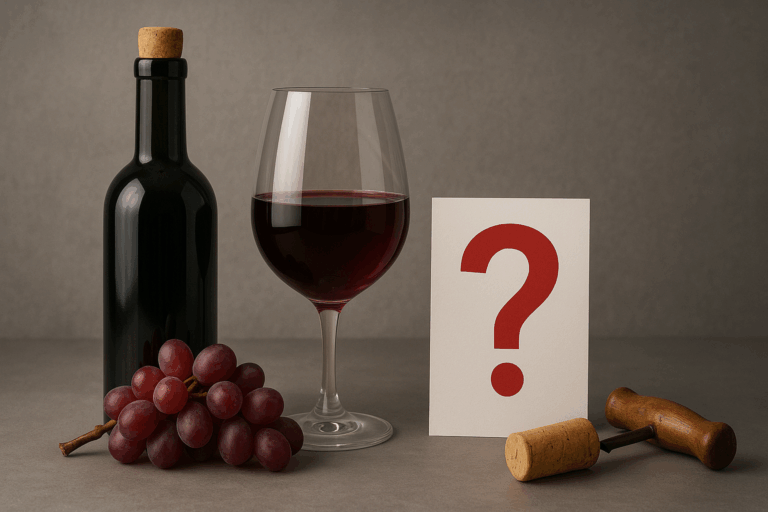Choosing Your First Wine
Selecting your first bottle of wine can feel like stepping into a maze. Red, white, dry, sweet, light-bodied, full-bodied — with so many options, it’s easy to feel overwhelmed. But finding a wine you love doesn’t require a sommelier certification. You just need to know a few basics and trust your taste.
This guide will help you confidently choose your first wine based on your preferences, setting, and goals.
Step 1: Know What You Usually Like
One of the easiest ways to choose your first wine is to think about flavors you already enjoy in food or drinks. Ask yourself:
- Do you like sweet things (juices, sodas, desserts)?
- Do you enjoy bitter or bold flavors (dark chocolate, coffee)?
- Do you prefer light, refreshing beverages or rich, creamy ones?
Your answers can guide your wine choice:
- If you like sweetness, start with a Moscato, off-dry Riesling, or Lambrusco
- If you like citrus or herbal flavors, go for a Sauvignon Blanc
- If you enjoy rich and bold tastes, try a Cabernet Sauvignon or Malbec
Step 2: Choose a Wine Color
Wine comes in three main styles: red, white, and rosé. Here’s what you can expect from each:
Red Wine
- Usually bolder, richer, and more tannic
- Best with meat or hearty dishes
- Beginner-friendly reds: Pinot Noir, Merlot
White Wine
- Lighter, crisper, often more acidic
- Best with salads, seafood, or light meals
- Beginner-friendly whites: Chardonnay, Riesling, Sauvignon Blanc
Rosé Wine
- A middle ground between red and white
- Fresh, fruity, and often slightly sweet
- Great for summer and social events
Step 3: Understand Wine Body
Wine body refers to how the wine feels in your mouth — like the difference between skim milk and whole milk.
- Light-bodied wines: Refreshing and easy to sip. Try Pinot Grigio, Beaujolais, or Rosé.
- Medium-bodied wines: Balanced and versatile. Try Merlot, Chenin Blanc.
- Full-bodied wines: Rich and heavy on the palate. Try Cabernet Sauvignon, Chardonnay (oaked).
If you’re unsure, medium-bodied wines are a safe and satisfying place to start.
Step 4: Decide on Sweet or Dry
This is often the make-or-break factor for beginners. Dry doesn’t mean “bitter” — it just means the wine isn’t sweet.
- If you enjoy sweet flavors, go for Moscato, Riesling, or sweet Rosé
- If you want something more refreshing, try Sauvignon Blanc or dry Rosé
- If you like bold and non-sweet options, explore Cabernet Sauvignon or Syrah
Start with wines labeled “semi-sweet” or “off-dry” for a smooth transition.
Step 5: Choose the Right Price Point
For your first wine, stick to a mid-range bottle — around $10 to $20. You don’t need to spend a lot to get a quality experience, but very cheap wines can sometimes disappoint.
Look for these tips:
- Ask staff at local wine shops for beginner-friendly suggestions
- Look for labels with tasting notes and food pairings
- Consider smaller bottles if you’re not ready to commit to a full 750ml
Step 6: Match the Wine to the Occasion
Are you drinking alone, with friends, or during a meal? Here are some suggestions:
- Relaxing alone: Try a chilled white like Riesling or a soft red like Pinot Noir
- Dinner with friends: Choose a versatile Rosé or Merlot
- With food: Match wine to food style — light with light, bold with bold
- Celebration: Go for something sparkling like Prosecco or Cava
Step 7: Read the Label Carefully
Even without wine knowledge, labels give clues:
- Grape Variety: Tells you the kind of grape used (e.g., Cabernet, Chardonnay)
- Region: New World wines (like from the U.S., Australia, Chile) are often more fruit-forward
- ABV (Alcohol by Volume): Wines around 12–13% are a good balance for beginners
- Tasting Notes: Many modern wines include short flavor descriptions on the back
If you’re confused, apps like Vivino or Delectable can help you scan labels and read reviews instantly.
Beginner Wine Recommendations
Here’s a short list of popular, beginner-approved wines to look for:
- Barefoot Moscato (sweet white)
- Yellow Tail Shiraz (juicy red)
- La Vieille Ferme Rosé (light pink)
- Kendall-Jackson Chardonnay (rich white)
- Bogle Merlot (soft and smooth red)
- Kim Crawford Sauvignon Blanc (zesty white)
These are widely available, affordable, and often well-reviewed.
Your First Wine Should Be Enjoyable — Not Perfect
There’s no pressure to pick the “best” wine on your first try. Your taste will evolve over time. The goal is to start with something enjoyable, then explore from there.
Don’t be afraid to try new things, take notes, and most importantly — enjoy the process. Wine is meant to be a journey, not a test.






